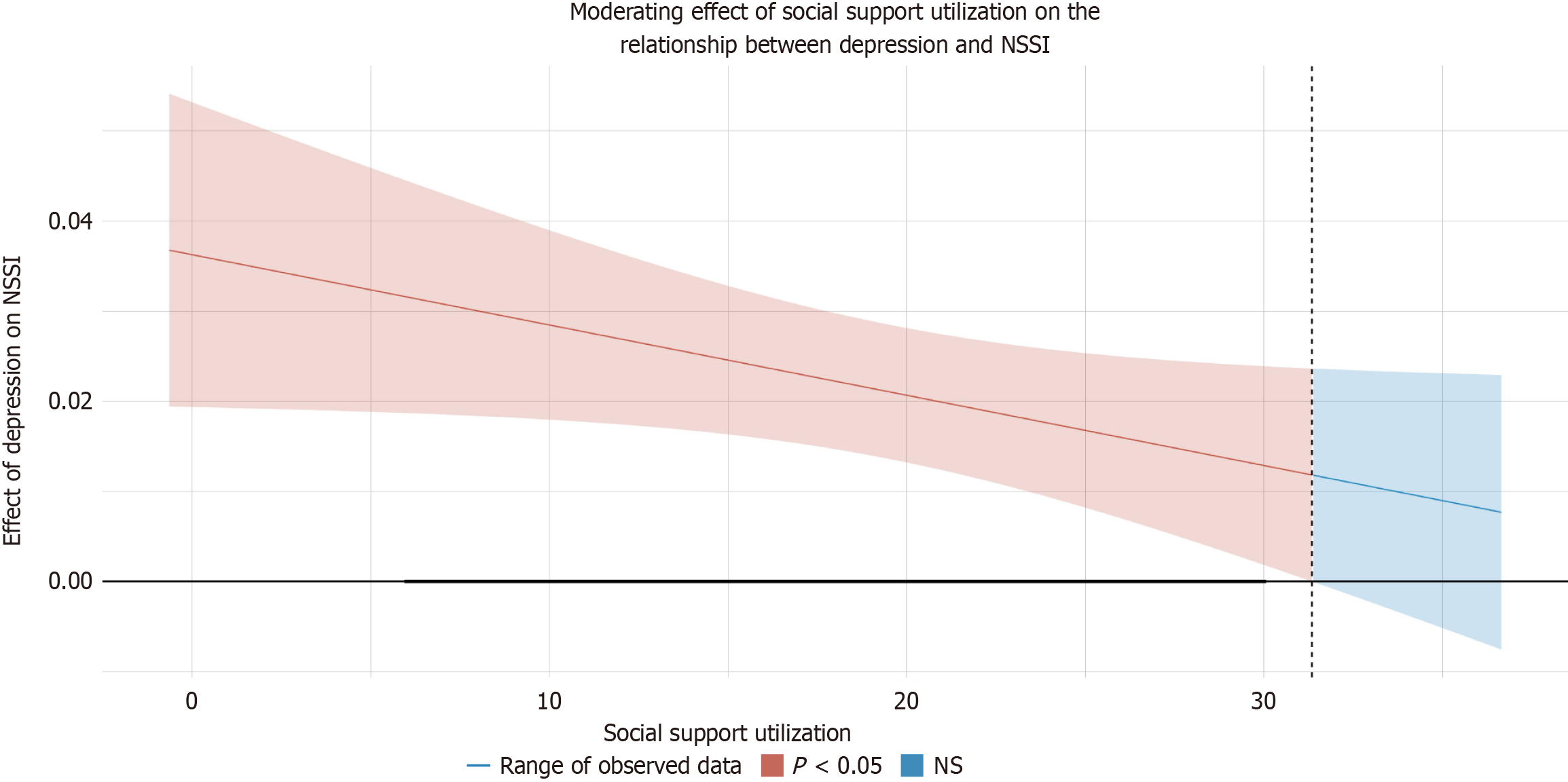Copyright
©The Author(s) 2025.
World J Psychiatry. Jun 19, 2025; 15(6): 106017
Published online Jun 19, 2025. doi: 10.5498/wjp.v15.i6.106017
Published online Jun 19, 2025. doi: 10.5498/wjp.v15.i6.106017
Figure 1 Moderating effect of social support utilization on the relationship between depression severity and non-suicidal self-injury probability in adolescents.
Figure 1 illustrates the interaction effect between self-rating depression scale (SDS) scores and teenager social support rating scale (TSSRS) utilization on the probability of non-suicidal self-injury (NSSI) among adolescents. The X-axis represents SDS scores (range: 10-50) and the Y-axis shows the probability of NSSI (range: 0%-100%). Five levels of TSSRS utilization are depicted, ranging from very low (-2 SD) to very high (+2 SD). Each curve represents the relationship between SDS scores and NSSI probability for a specific level of social support utilization. The graph demonstrates that higher levels of social support utilization are associated with a more gradual increase in NSSI probability as depression severity increases. This finding suggests a potential buffering effect of social support on the relationship between depression and NSSI in adolescents. The divergence of curves at higher SDS scores indicates that the protective effect of social support utilization may be particularly pronounced for adolescents with more severe depressive symptoms. SDS: Self-rating depression scale; TSSRS: Teenager social support rating scale; NSSI: Non-suicidal self-injury.
Figure 2 Johnson-Neyman plot of the moderating effect of social support utilization on the relationship between depression and non-suicidal self-injury.
This Johnson-Neyman plot illustrates the conditional effect of depression on non-suicidal self-injury (NSSI) across different levels of social support utilization. The red shaded area represents the region of significance (P < 0.05), while the blue area indicates non-significance. The narrowing of the confidence interval (shaded area around the line) from left to right suggests increased precision in the estimate at higher levels of social support utilization. The observed range of social support utilization in the study was 6 to 30. The effect of depression on NSSI remains significant but decreases as social support utilization increases, as indicated by the downward slope of the line. The Johnson-Neyman technique reveals that the relationship between depression and NSSI is significant for all observed values of social support utilization in this study. NSSI: Non-suicidal self-injury; NS: No significance.
- Citation: Hu JT, Cao Y, Liu LL, Wang D, Zhu P, Du X, Ji F, Peng RJ, Tian Q, Zhu F. Adolescent non-suicidal self-injury: The moderating influence of social support utilization on depression. World J Psychiatry 2025; 15(6): 106017
- URL: https://www.wjgnet.com/2220-3206/full/v15/i6/106017.htm
- DOI: https://dx.doi.org/10.5498/wjp.v15.i6.106017














